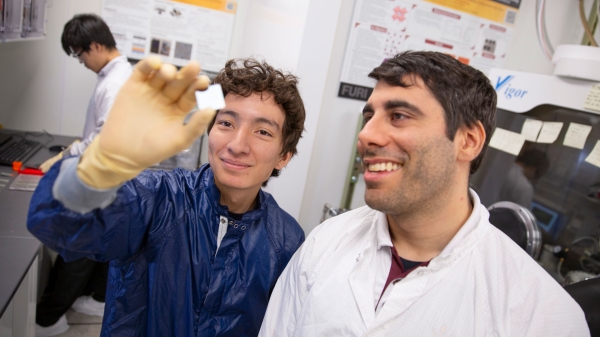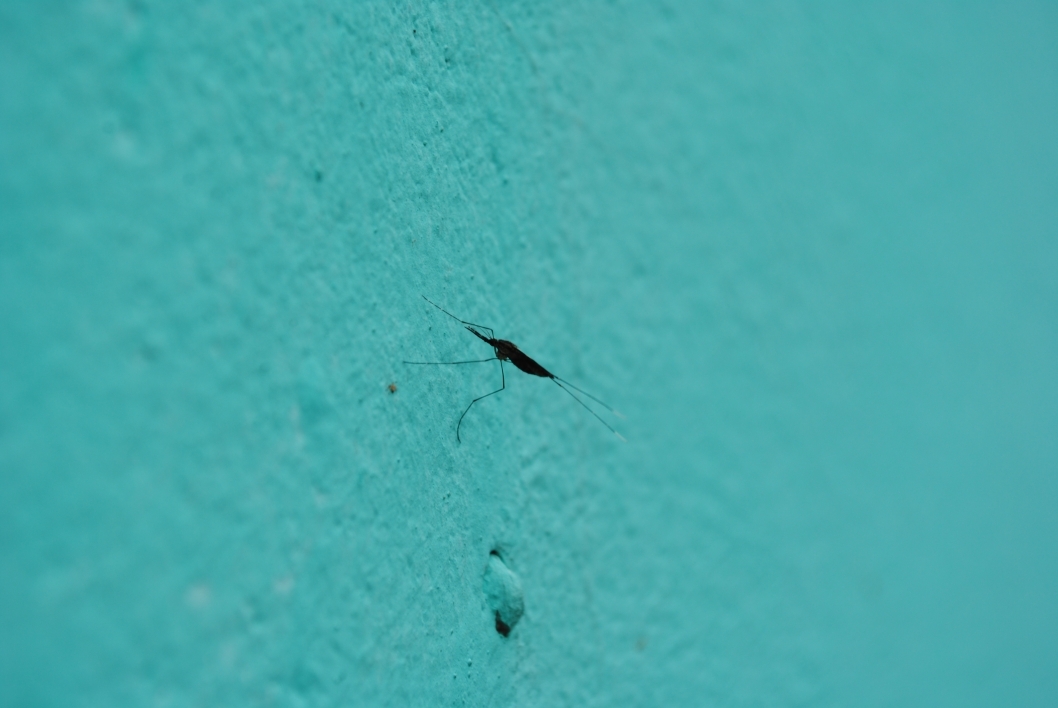'Superarthropods': New publication reveals impact of widespread use of insecticides for malaria control

An employee of the National Malaria Control Program in Mozambique spraying insecticides on walls inside a home. Photo courtesy Krijn Paaijmans
Diseases are often caused by viruses, bacteria or even parasites. Sometimes, these microorganisms cannot infect humans (or other animals) by themselves, so they rely on other organisms — called vectors — to carry them around and transmit the disease from one host to another. A well-known group of vectors is arthropods, known for their hard exoskeleton, segmented bodies and jointed legs. They are incredibly diverse and can be found in a variety of habitats worldwide. Arthropods include mosquitoes, sand flies, kissing bugs and ticks.
Mosquitoes in particular spread diseases like malaria, dengue, Zika and yellow fever. Over the past century, people have developed ways to reduce mosquito numbers to avoid spreading life-threatening diseases, mainly malaria. The most common approach is using insecticides added to bednets or sprayed indoors. Although these tools target mosquitoes, they often affect other types of arthropods that might come in contact with them.
Graduate student Ndey Bassin Jobe, Assistant Professor Silvie Huijben and Assistant Professor Krijn Paaijmans of Arizona State University's School of Life Sciences and Center for Evolution and Medicine recently published a personal view in The Lancet Planetary Health journal in which they discuss how insecticides used in malaria control not only affect malaria-carrying mosquitoes but can also lead to insecticide resistance in other arthropods, several of which transmit overlooked and dangerous tropical diseases.
How these arthropods behave, like when and where they feed and rest, affects how much they are exposed to insecticides used for malaria control. Jobe and colleagues argue that there is an urgent need to monitor the behavior and insecticide susceptibility status of those other arthropods.
When other arthropods are repeatedly exposed to the same insecticides, they might become resistant to the chemicals meant to kill or control malaria mosquitoes.
“Understanding the extent to which other disease vectors are exposed to insecticides used now is critical because if they already develop resistance, it will be difficult to prevent and control future emerging and re-emerging diseases,” Jobe explained.
Unfortunately, many other arthropod species are already resistant to insecticides used in malaria vector control. Scientists still don’t know much about when, where and how often they come into contact with malaria control tools. Understanding how these organisms become resistant is crucial in ensuring insecticides' effective control and prevention of various diseases now and in the future.
“Effectively combating vector-borne diseases depends very often on the control of arthropod vectors as for many diseases, including West Nile virus, Zika, chikungunya, Saint Louis encephalitis and Ross River virus, we do not have vaccines or drugs,” Paaijmans said.
The authors emphasize an urgent need for a comprehensive approach to managing disease-carrying organisms. Understanding behavioral patterns and the overall characteristics of other organisms that can spread disease is critical in preventing and controlling future health threats.
“We have to improve our understanding of the distribution, ecology, behavior and insecticide susceptibility status of all other relevant arthropod species to ensure we develop the most future-proof and holistic vector control strategies and protect future generations,” Huijben said.
More Science and technology

ASU student researchers get early, hands-on experience in engineering research
Using computer science to aid endangered species reintroduction, enhance software engineering education and improve semiconductor…

ASU professor honored with prestigious award for being a cybersecurity trailblazer
At first, he thought it was a drill.On Sept. 11, 2001, Gail-Joon Ahn sat in a conference room in Fort Meade, Maryland.…

Training stellar students to secure semiconductors
In the wetlands of King’s Bay, Georgia, the sail of a nuclear-powered Trident II Submarine laden with sophisticated computer…

